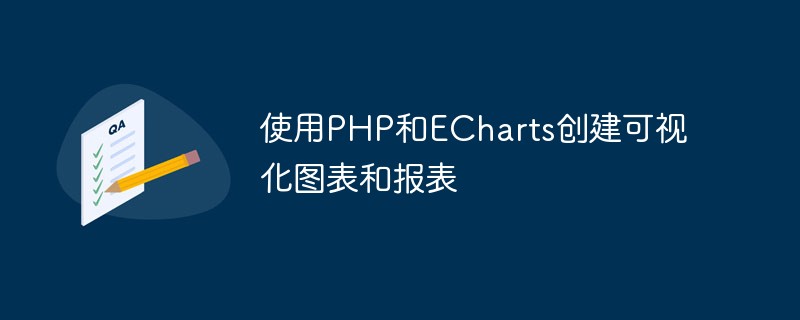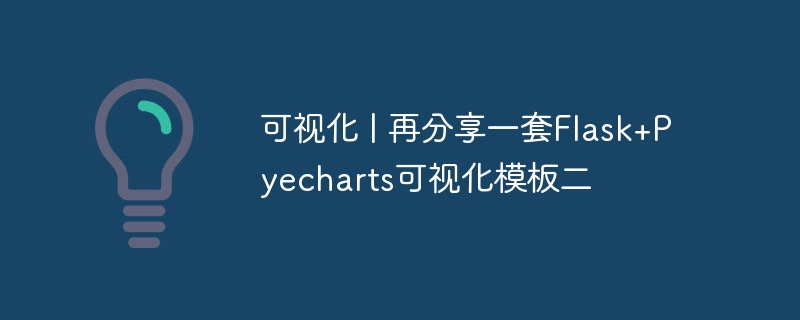Vue and Canvas: How to implement visual chart applications
Introduction:
With the development of the Internet, visual chart applications have been widely used in all walks of life. In web development, Vue and Canvas are two commonly used tools. This article will introduce how to combine Vue and Canvas to implement visual chart applications, and provide corresponding code examples.
1. Introduction to Vue
Vue is a progressive framework for building user interfaces. It can achieve dynamic data binding and response by parsing and rendering HTML templates. The characteristics of Vue include simplicity, flexibility, ease of use and efficiency.
2. Introduction to Canvas
Canvas is an element in HTML5, which can use scripts (usually JavaScript) to draw graphics in it. Through Canvas, we can draw various charts, graphics and animations. Canvas provides rich drawing functions that can meet the needs of most scenarios.
3. Combination of Vue and Canvas
Using Canvas in Vue can realize complex chart applications. The following is an example of a simple bar chart:
HTML template:
<div id="app"> <canvas ref="canvas" width="400" height="300"></canvas> </div>
Vue instance:
new Vue({
el: '#app',
mounted() {
this.drawChart();
},
methods: {
drawChart() {
const canvas = this.$refs.canvas;
const ctx = canvas.getContext('2d');
// 绘制坐标轴
ctx.beginPath();
ctx.moveTo(50, 250);
ctx.lineTo(50, 50);
ctx.lineTo(350, 250);
ctx.stroke();
// 绘制柱状图
const data = [30, 50, 80, 120];
const barWidth = 50;
const barSpacing = 50;
ctx.fillStyle = 'blue';
for (let i = 0; i < data.length; i++) {
const x = 50 + (barWidth + barSpacing) * i;
const y = 250 - data[i];
const height = data[i];
ctx.fillRect(x, y, barWidth, height);
}
},
},
});In the above code, the mounted hook function is used After the Vue instance is mounted, call the drawChart method to draw the histogram. In the drawChart method, first obtain the Canvas element and drawing context, then use the beginPath method to start a new path, and pass moveTo and lineTo Method to draw the coordinate axis. Next, loop through the data array and use the fillRect method to draw each histogram.
It should be noted that when using Canvas in Vue, you need to use $refs to obtain the Canvas element and obtain the drawing context through the getContext method.
4. Further expansion
In addition to bar charts, we can also use Vue and Canvas to draw other types of charts, such as line charts, pie charts, etc. This only requires modifying the drawing logic in the drawChart method according to requirements.
In actual development, we can also combine other plug-ins and tools to provide more powerful and flexible chart functions. For example, use chart libraries such as ECharts or Chart.js, which provide a wealth of chart types and configuration options to meet more needs.
Conclusion:
Through the combination of Vue and Canvas, visual chart applications can be quickly realized. Vue provides data binding and response capabilities, while Canvas provides powerful drawing functions. We can flexibly use Vue and Canvas to implement various types of charts according to specific needs, and can be expanded by combining other plug-ins and tools during actual development.
Reference materials:
- Vue official documentation: https://vuejs.org/
- Canvas tutorial: https://developer.mozilla.org/zh -CN/docs/Web/API/Canvas_API/Tutorial
The above is the detailed content of Vue and Canvas: How to implement visual chart applications. For more information, please follow other related articles on the PHP Chinese website!
 Python可视化 | Python可视化进阶必备 - plotlyMay 03, 2023 pm 02:07 PM
Python可视化 | Python可视化进阶必备 - plotlyMay 03, 2023 pm 02:07 PM一、简介Plotly是一个非常著名且强大的开源数据可视化框架,它通过构建基于浏览器显示的web形式的可交互图表来展示信息,可创建多达数十种精美的图表和地图。二、绘图语法规则2.1离线绘图方式Plotly中绘制图像有在线和离线两种方式,因为在线绘图需要注册账号获取APIkey,较为麻烦,所以本文仅介绍离线绘图的方式。离线绘图又有plotly.offline.plot()和plotly.offline.iplot()两种方法,前者是以离线的方式在当前工作目录下生成html格式的图像文件,并自动打开;
 如何使用Python代码创建复杂的财务图表?Apr 24, 2023 pm 06:28 PM
如何使用Python代码创建复杂的财务图表?Apr 24, 2023 pm 06:28 PM介绍编程和技术应用于金融领域的激增是不可避免的,增长似乎从未下降。应用编程的最有趣的部分之一是历史或实时股票数据的解释和可视化。现在,为了在python中可视化一般数据,matplotlib、seaborn等模块开始发挥作用,但是,当谈到可视化财务数据时,Plotly将成为首选,因为它提供了具有交互式视觉效果的内置函数。在这里我想介绍一个无名英雄,它只不过是mplfinance库matplotlib的兄弟库。我们都知道matplotlib包的多功能性,并且可以方便地绘制任何类型的数据。
 使用PHP和ECharts创建可视化图表和报表May 10, 2023 pm 10:21 PM
使用PHP和ECharts创建可视化图表和报表May 10, 2023 pm 10:21 PM随着大数据时代的来临,数据可视化成为企业决策的重要工具。千奇百怪的数据可视化工具层出不穷,其中ECharts以其强大的功能和良好的用户体验受到了广泛的关注和应用。而PHP作为一种主流的服务器端语言,也提供了丰富的数据处理和图表展示功能。本文将介绍如何使用PHP和ECharts创建可视化图表和报表。ECharts简介ECharts是一个开源的可视化图表库,它由
 使用PHP和SQLite实现数据图表和可视化Jul 28, 2023 pm 01:01 PM
使用PHP和SQLite实现数据图表和可视化Jul 28, 2023 pm 01:01 PM使用PHP和SQLite实现数据图表和可视化概述:随着大数据时代的到来,数据图表和可视化成为了展示和分析数据的重要方式。在本文中,将介绍如何使用PHP和SQLite实现数据图表和可视化的功能。以一个实例为例,展示如何从SQLite数据库中读取数据,并使用常见的数据图表库来展示数据。准备工作:首先,需要确保已经安装了PHP和SQLite数据库。如果没有安装,可
 如何利用Vue和Excel快速生成可视化的数据报告Jul 21, 2023 pm 04:51 PM
如何利用Vue和Excel快速生成可视化的数据报告Jul 21, 2023 pm 04:51 PM如何利用Vue和Excel快速生成可视化的数据报告随着大数据时代的到来,数据报告成为了企业决策中不可或缺的一部分。然而,传统的数据报告制作方式繁琐而低效,因此,我们需要一种更加便捷的方法来生成可视化的数据报告。本文将介绍如何利用Vue框架和Excel表格来快速生成可视化的数据报告,并附上相应的代码示例。首先,我们需要创建一个基于Vue的项目。可以使用Vue
 可视化 | 再分享一套Flask+Pyecharts可视化模板二Aug 09, 2023 pm 04:05 PM
可视化 | 再分享一套Flask+Pyecharts可视化模板二Aug 09, 2023 pm 04:05 PM本期再给大家分享一套适合初学者的<Flask+Pyecharts可视化模板二>,希望对你有所帮助
 使用Flask和D3.js构建交互式数据可视化Web应用程序Jun 17, 2023 pm 09:00 PM
使用Flask和D3.js构建交互式数据可视化Web应用程序Jun 17, 2023 pm 09:00 PM近年来,数据分析和数据可视化已经成为了许多行业和领域中不可或缺的技能。对于数据分析师和研究人员来说,将大量的数据呈现在用户面前并且让用户能够通过可视化手段来了解数据的含义和特征,是非常重要的。为了满足这种需求,在Web应用程序中使用D3.js来构建交互式数据可视化已经成为了一种趋势。在本文中,我们将介绍如何使用Flask和D3.js构建交互式数据可视化Web
 用 Python 制作可视化 GUI 界面,一键实现证件照背景颜色的替换May 19, 2023 pm 04:19 PM
用 Python 制作可视化 GUI 界面,一键实现证件照背景颜色的替换May 19, 2023 pm 04:19 PM关于界面的大致模样其实和先前的相差不大,大家应该都看过上一篇的内容。界面大体的样子整体GUI的界面如下图所示:用户在使用的时候可以选择将证件照片替换成是“白底背景”或者是“红底背景”,那么在前端的界面上传完成照片之后,后端的程序便会开始执行该有的操作。去除掉背景颜色首先我们需要将照片的背景颜色给去除掉,这里用到的是第三方的接口removebg,官方链接是:我们在完成账号的注册之后,访问下面的链接获取api_key:https://www.remove.bg/api#remove-backgrou


Hot AI Tools

Undresser.AI Undress
AI-powered app for creating realistic nude photos

AI Clothes Remover
Online AI tool for removing clothes from photos.

Undress AI Tool
Undress images for free

Clothoff.io
AI clothes remover

AI Hentai Generator
Generate AI Hentai for free.

Hot Article

Hot Tools

WebStorm Mac version
Useful JavaScript development tools

SAP NetWeaver Server Adapter for Eclipse
Integrate Eclipse with SAP NetWeaver application server.

MantisBT
Mantis is an easy-to-deploy web-based defect tracking tool designed to aid in product defect tracking. It requires PHP, MySQL and a web server. Check out our demo and hosting services.

SublimeText3 Chinese version
Chinese version, very easy to use

Dreamweaver Mac version
Visual web development tools





